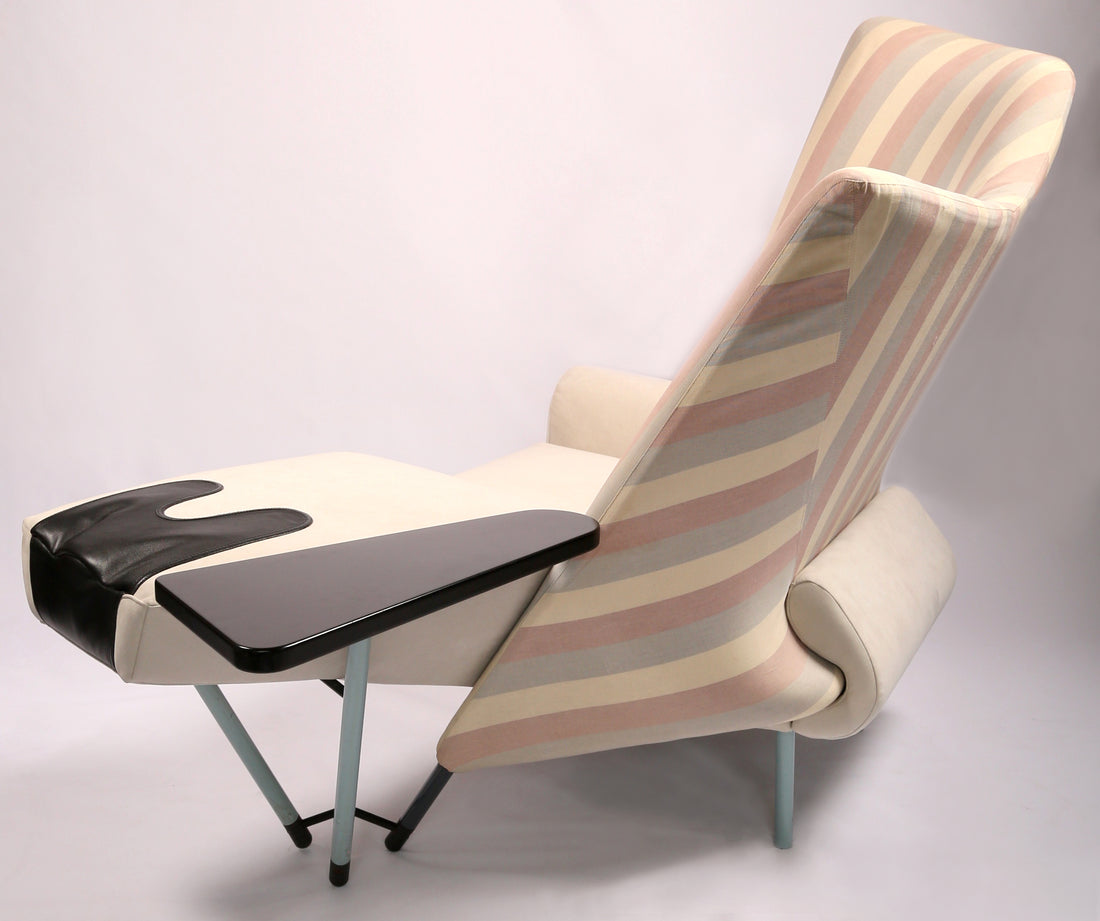
Reupholstering a Torso Chair by Paolo Deganello for Cassina - a step by step guide

Paolo Deganello, a visionary architect and designer, graduated from the University of Florence in 1966, the same year he co-founded the groundbreaking design collective Archizoom. Known for its radical approach, Archizoom sought to redefine the relationship between architecture, design, and politics. After the group disbanded in 1972, Deganello pursued a prolific career, blending innovation with functionality in his work.
In 1982, he designed the iconic Torso Lounge Chair for Cassina, a striking piece celebrated for its sculptural form and bold, two-tone aesthetic. Here’s a step-by-step guide to how we approached the intricate process of reupholstering this design classic.
Deconstructing The Chair
The chair comprises of four main components: the backrest, a one-piece seat frame, a wooden table, and the S-shaped back cushion. The backrest and table are secured to the seat with screws accessible through the tubular legs. Removing them required extra-long Allen keys.

Unpicking the Original Fabric

We carefully removed the original fabric, unpicking each seam and labelling the 11 individual fabric pieces to ensure accuracy during reconstruction.

Preparing New Patterns
Using the original fabric as templates, we cut 11 precise patterns for the new upholstery. We selected Alcantara, a luxurious synthetic suede-like material renowned for its durability. Often used in high-end automotive interiors, Alcantara allows no room for error—each stitch must be perfect as it cannot be unpicked without leaving marks.

Sewing the Seat Upholstery
The seat is upholstered in three sections. Each section has a ‘fly’ fabric panel sewn to it, which is pulled through the centre of the seat frame to the base and secured with staples. The seams were top-stitched to enhance durability and maintain the chair’s sleek design.

Adding Zips for Assembly
To ensure reassembly access, zips were sewn onto the head and foot sections, allowing them to attach seamlessly to the seat's middle section. Half the zip was sewn onto each section, with the pull added only after the fabric was in place.

Restoring the Leather Footrest
The leather footrest, an integral part of the chair, was carefully removed, cleaned, and prepared for reuse.

Marking and Sewing the Leather
The original stitch holes were meticulously marked to ensure accuracy.


The leather was hand-sewn onto the new Alcantara fabric using the existing holes, requiring exceptional precision. The two fabric pieces were machine-stitched through the original leather holes—a particularly challenging task since the holes were concealed beneath the Alcantara.


Tackling the S-Shaped Back Cushion
The S-shaped back cushion was one of the most complex aspects of the reupholstery. Its unique shape required a new pattern to be cut directly from the mould. This piece also serves as a cover, concealing the staples that secure the fabric over the chair’s frame.

Reassembly
Once the upholstery was complete, the chair was reassembled. The zips provided access to attach the backrest and steel legs. The meticulous alignment of the fabric ensured a seamless finish.

Preserving Original Elements
We decided to retain the original fabric on the backrest, as it was in excellent condition and challenging to replicate. The Alcantara matched perfectly, blending the old and new seamlessly.

Reupholstering the Torso Chair was one of the most demanding projects we’ve ever undertaken. Its intricate design and unconventional construction required precision, patience, and problem-solving. Despite the challenges, the process gave me a profound respect for Paolo Deganello’s innovative approach to design—and a deeper appreciation for this extraordinary chair.




